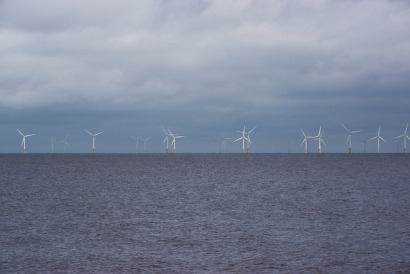
Representing a 15% increase from May 31, 2022, this potential generating capacity includes:
The report also found that the market has become more volatile in the past year, with project costs increasing due to inflation, interest rates, and supply chain uncertainty. The Inflation Reduction Act may provide some relief to keep projects profitable.
The NREL analysis, which wind energy researchers conduct annually on behalf of the U.S. Department of Energy (DOE) Wind Energy Technologies Office, also includes worldwide wind energy industry data spanning Jan. 1, 2022–Dec. 31, 2022 and U.S. data spanning Jan. 1, 2022–May 31, 2023.
Globally, the researchers reported, total offshore wind energy capacity reached 59,009 MW from 292 operating projects and more than 11,900 operating wind turbines. Nearly 22,000 MW of offshore wind capacity were under construction worldwide at the end of December 2022.
“Our analysis confirms that the offshore wind energy market is powering up despite some significant economic headwinds,” said Walt Musial, NREL offshore wind energy expert and the lead author on the report.
The Offshore Wind Market Report: 2023 Edition provides detailed information about offshore wind energy development to inform policymakers, researchers, and analysts about technology and market trends. Released by DOE on Aug. 24, 2023, the report also highlights findings in the following areas.
From January 2022 to May 2023, key developments in the U.S. offshore wind energy industry market included:
Floating offshore wind energy—a type of technology in which wind turbines are mounted on buoyant structures that are anchored to the seabed rather than fixed to the ocean floor—is the newest form of offshore wind energy. This allows wind farms to be deployed in deeper waters where traditional fixed-bottom offshore wind turbines are not feasible.
According to the market report, key floating offshore wind market developments included:
The Inflation Reduction Act of August 2022 provides tax credit incentives for investing in offshore wind energy and the domestic supply chain while also potentially softening adverse impacts of rising costs due to inflation, supply chain constraints, and interest rates.
Trends in offshore wind energy projects show growth in project size and turbine size. At both a national and global level, developers have increased project size as well as water depth and distance to shore. In addition, offshore wind energy project developers are advancing 15-MW wind turbine prototypes toward commercial production.
Project costs globally:
Offshore wind energy continues to expand, with forecasts showing that:
“Despite recent market uncertainty, the project pipelines continue to grow in both fixed and floating offshore wind project developments,” Musial said. “As the first major projects move toward commercial operation in the next year, we are likely to see offshore wind begin to make a significant contribution toward reducing the carbon emissions of our electric supply.”

